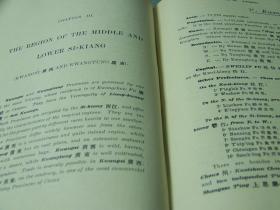您所在的位置:首页 - 知识 - 正文知识
中英诗歌鉴赏
![]() 晚萤
2024-05-21
【知识】
407人已围观
晚萤
2024-05-21
【知识】
407人已围观
摘要Title:AComparativeAppreciationofChineseandWesternPoetryPoetry,asanartform,hasbeenapartofhumanculture
Title: A Comparative Appreciation of Chinese and Western Poetry
Poetry, as an art form, has been a part of human culture for centuries, with diverse traditions and styles emerging from different regions of the world. Chinese and Western poetry represent two distinct yet equally rich traditions, each with its own unique characteristics, themes, and aesthetic values. In this comparative appreciation, we will explore the key differences and similarities between Chinese and Western poetry, highlighting the beauty and significance of both traditions.
Structure and Form:
Chinese Poetry:

Chinese poetry is characterized by its strict structural rules, notably the use of specific forms such as the regulated verse (律诗) and the ancientstyle verse (古诗). These forms adhere to precise patterns of syllable count and tonal qualities, creating a musical and rhythmic quality in the verses. Additionally, Chinese poetry often incorporates the use of parallelism and couplets, with each line consisting of an equal number of characters.
Western Poetry:
In contrast, Western poetry encompasses a wide range of forms and structures, with a focus on rhyme, meter, and stanzaic organization. From the sonnet to the villanelle, the diversity of forms in Western poetry allows for experimentation and innovation, enabling poets to express their creativity through various patterns of rhythm and rhyme.
Themes and Imagery:
Chinese Poetry:
Traditional Chinese poetry often revolves around themes of nature, solitude, and the passage of time. Imagery involving natural landscapes, such as mountains, rivers, and flowers, is frequently employed to convey emotions and philosophical ideas. Symbolism and allusion are integral to Chinese poetic tradition, with the use of concrete imagery to convey abstract concepts.
Western Poetry:
Western poetry explores a wide array of themes, including love, mortality, and societal issues. Imagery in Western poetry is diverse and can range from the pastoral to the urban, with poets drawing inspiration from mythology, history, and personal experiences. Metaphor and simile are commonly used to create vivid and evocative imagery, allowing for a deeper exploration of emotions and human experiences.
Language and Cultural Influence:
Chinese Poetry:
The Chinese language, with its rich history and complex characters, lends a distinctive cadence and tonal quality to Chinese poetry. The influence of Confucianism, Taoism, and Buddhism is evident in the philosophical underpinnings of many classical Chinese poems, reflecting the values and beliefs of ancient Chinese culture.
Western Poetry:
The English language, along with other Western languages, offers a diverse range of linguistic tools for poets to convey meaning and emotion. Western poetry is deeply influenced by GrecoRoman traditions, Christianity, and various literary movements, which have contributed to the evolution of poetic themes and forms over time.
Conclusion:
In conclusion, while Chinese and Western poetry differ in structural constraints, thematic emphasis, and cultural influences, both traditions share a common goal: to evoke emotion, provoke thought, and capture the beauty of human experience through the power of language. By appreciating the distinct features of each tradition, we can gain a deeper understanding of the universal appeal of poetry as a timeless art form that transcends cultural boundaries.
Tags: 中西方诗歌的比较例子 中西诗歌对比 中西方诗歌的比较
版权声明: 感谢您对【奚诗视窗网】网站平台的认可,无特别说明,本站所有文章均归【奚诗视窗网】平台所有,转载请说明文章出处“来源【奚诗视窗网】”。 https://www.tjdhgcc.com/post/9874.html



